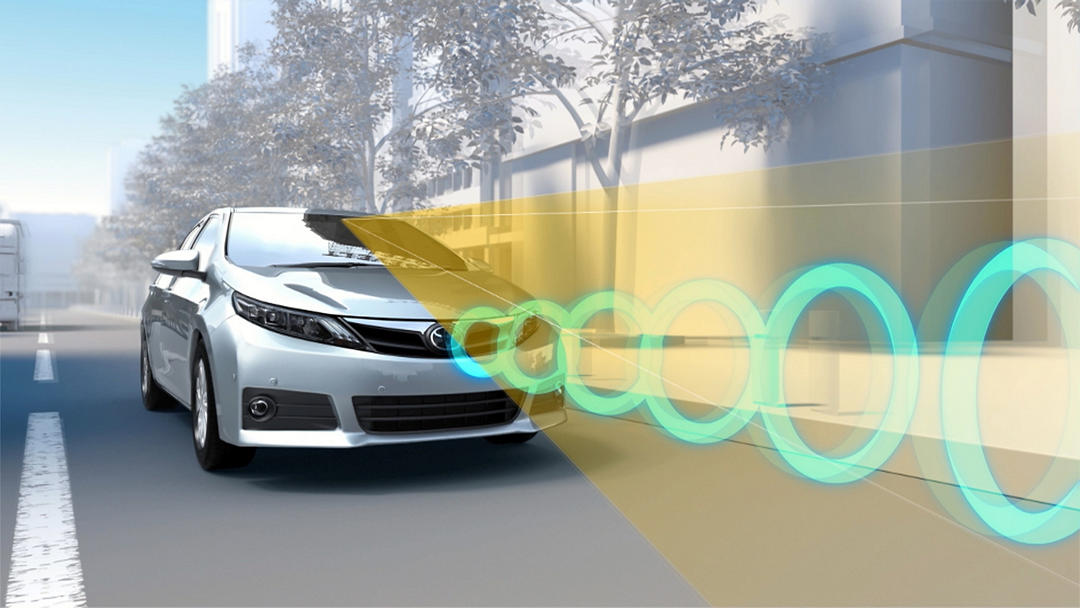LANGUAGES

- Since 2015 rollout, 10 million-milestone reached in 3.5 years
- Installed in 90 percent of Toyota vehicles in Japan, the United States, Canada, and Europe
- Rear-end collisions reduced by 70 percent (90 percent when combined with Intelligent Clearance Sonar, which covers lower speed rear-end collisions)
- Ongoing development to support intersection accident response
- Introduced in 68 countries and regions, with expansion to approximately 100 by 2020 planned
TOYOTA CITY, Japan, November 28, 2018—Toyota Motor Corporation (Toyota) announced the total global number of vehicles equipped with Toyota Safety Sense (TSS)1, the Toyota-developed preventive safety package, has reached the 10-million-unit mark, approximately three and a half years after its March 2015 introduction. It is anticipated that within this year, three million vehicles in Japan and five million vehicles in North America will have the package.
Toyota first introduced the package with the “Corolla” series, centred on the belief that popularizing safety technology is vital. Toyota Safety Sense is currently equipped in approximately 90 percent of Toyota and Lexus vehicles2 for the Japanese, United States, Canada, and European markets. At present, it has been introduced in a total of 68 countries and regions, including China, other select Asian countries, the Middle East, and Australia.
Toyota Safety Sense helps avoid or mitigate damage and/or injury from serious traffic accidents, based on accident data from Japan, the United States, and Europe. It comprises the following three aspects:
- Pre-Collision System (PCS): helps prevent and mitigate damage from rear-end collisions involving vehicles and/or pedestrians3
- Lane Departure Alert (LDA): helps prevent vehicles from deviating from their lanes and head-on collisions4
- Automatic High Beam (AHB): contributes to the early detection of pedestrians and the reduction of accidents during nighttime driving5
Rear-end collisions—the most common type of accident in Japan—involving vehicles equipped with Toyota Safety Sense have been reduced by approximately 70 percent6. If TSS and Intelligent Clearance Sonar (ICS), which covers lower-speed collisions, are combined, rear-end collisions have fallen by approximately 90 percent.
Toyota Safety Sense is further evolving, based on a two-pronged approach of bolstering its adaptability to traffic accidents involving fatalities and/or injuries, and further popularizing the package, aiming toward the goal of completely eliminating traffic fatalities and injuries.
The second-generation Toyota Safety Sense, introduced in January 2018, makes improvements in detection and performance compared to the previous version, and allows the package to respond to nighttime pedestrian and/or bicycle accidents. Further development is focusing on expanding adaptability to traffic accidents involving fatalities and/or injuries, such as with pedestrians and head-on collisions with oncoming traffic at intersections.
Toyota and Lexus aim to introduce the packages in around 100 countries and regions, including Asia and Latin America, by 2020.
With a focus on providing everyone with safe, reliable mobility, Toyota considers Safety Sense a cornerstone of safe car-making. Toyota will continue to develop safety from a wide range of perspectives, including activities to raise awareness such as “Support Toyota”7 and by supporting development of a traffic environment that includes the use of Intelligent Transport System (ITS) and connected technologies.
###
1 Includes Lexus brand vehicles equipped with Lexus Safety System + and Lexus Safety System + A.
2 Calculated from the orders/ sales of vehicles in Japan, U.S., Canada and Europe between January and September 2018.
OEM models and business cars excluded.
3 PCS (with laser radar and a single-lens camera, certain vehicles only) can detect objects ahead of the vehicles and not pedestrians.
4 LKA (Lane Keeping Assist) and LTA (Lane Tracing Assist) both include LDA functions
5 Includes AHS (Adaptive High-beam System).
6 Based on independent calculations performed by Toyota using accident data from the Institute for Traffic Accident Research and Data Analysis (ITARDA). Figures calculated based on traffic accident occurrence rates for Toyota Safety Sense-equipped versus non-equipped Corolla, Prius, Premio, and Allion vehicles (totaling 680,000 vehicles overall) between January 2015 and December 2017.
Rates are reduced by approximately 90 percent with the combination of Intelligent Clearance Sonar (Parking Support Brakes [Stationary Objects]), designed for collision avoidance and damage mitigation at ultra-low speeds.
7 Support Toyota is the general name for Toyota’s initiatives in Japan toward safety and peace of mind as part of a life with cars through raising customer awareness and further popularizing safety technology. Specifically, Support Toyota involves raising awareness of traffic safety issues (such as the City Firefly Project) and promoting a clearer understanding of our products and services, including safety technology, connected services, Safety Support Car, Welcab, and Support Toyota Plus.
Every effort has been made to ensure the product specifications, equipment, and content on this site are accurate based on information available at time of publishing. In some cases, certain changes in standard equipment or options may occur, which may not be reflected online. Toyota Canada reserves the rights to make these changes without notice or obligation.